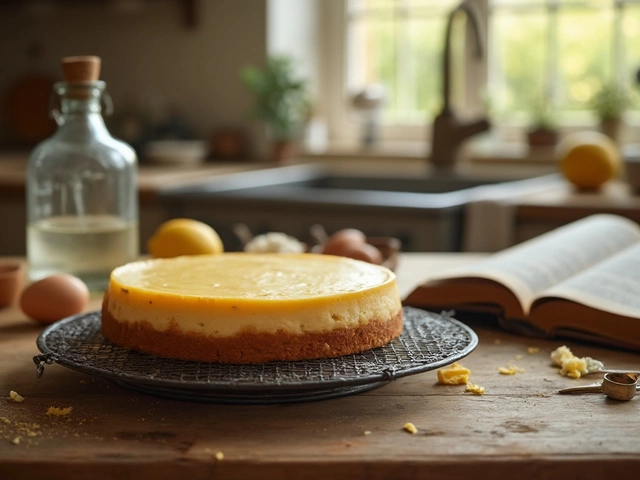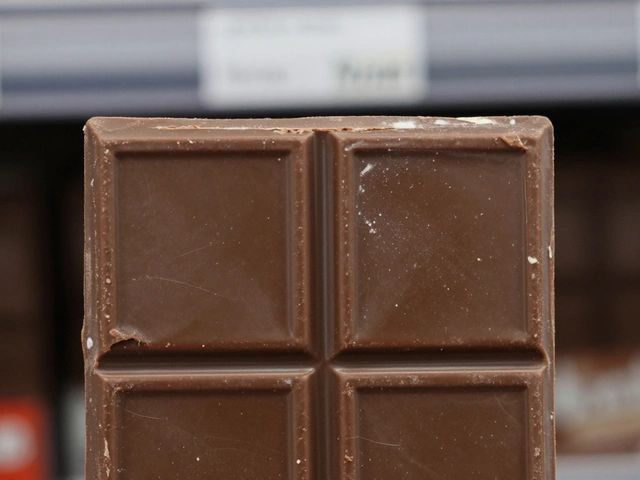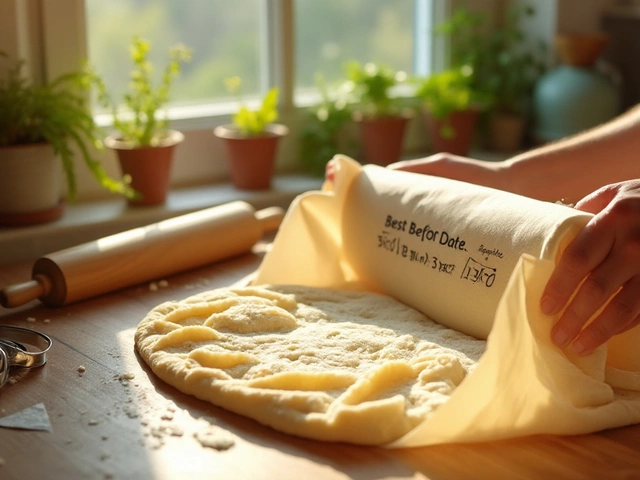
If you’ve ever pulled a batch of homemade cookies from the oven and got disappointed with rock-hard results, you’re not alone. Getting cookies to turn out soft is all about knowing what really goes on in that bowl and oven. It’s not random—there’s a method to it, and you can totally control it.
The biggies? Moisture and fat. A soft cookie usually has plenty of both. If your recipe uses extra brown sugar, more butter, or even a splash of molasses, you’re looking at cookies that’ll stay tender and chewy. Swapping some white sugar for brown isn’t just about flavor—it’s about drawing in more moisture and keeping the cookie soft even after a couple of days. And don’t be afraid to underbake a little. If the middle of the cookie looks just set but the edges are barely golden, you’ve likely nailed that soft texture. More tips, tricks, and the best hacks for pillowy cookies coming up.
- Why Do Cookies Turn Out Soft?
- Key Ingredients for Pillowy Cookies
- Smart Baking Techniques
- Storage Hacks for Lasting Softness
- Troubleshooting: When Cookies Go Wrong
Why Do Cookies Turn Out Soft?
Soft cookies aren’t a happy accident—they’re the result of smart choices about soft cookie ingredients, ratios, and baking times. It mostly comes down to moisture and how you handle fat, sugar, and heat.
Brown sugar is a big reason soft cookies work. It’s got more moisture than white sugar, and because it’s slightly acidic, it can slow down gluten development for a tender bite. Butter or shortening is important, too: butter adds great flavor and keeps cookies soft if you don’t melt it before mixing (creamed butter traps air, helping lift and soften the dough). Shortening has no water, so it gives you an even softer, thicker cookie. Many recipes use both for balance.
The amount of eggs matters as well. Eggs bind, but the yolk especially gives fat and moisture. Some tricks go further—like swapping a whole egg for just an extra yolk, or tossing in a spoonful of cornstarch for a super-tender crumb. And if the recipe uses a little bit of milk or cream, the extra liquid goes straight into making the cookies tender.
- Underbaking: Take cookies out when they still look a little underdone in the middle (they firm up as they cool).
- Chilling the dough: This stops cookies from spreading too thin and keeps centers moist.
- High-moisture add-ins: Mix-ins like dried fruit, peanut butter, or even a squirt of honey can bump up softness.
Curious how these factors stack up? Here’s a quick breakdown of what matters most for soft cookies:
| Factor | Effect on Softness |
|---|---|
| Brown Sugar | Holds moisture for a chewy, soft cookie |
| Creamed Butter | Adds air and keeps texture light |
| Extra Yolk/Cornstarch | Keeps crumb tender |
| Underbaking | Centers stay gooey, edges don’t crisp |
| Dough Chilling | Limits spread, holds onto moisture |
So, every time you tweak sugar, fat, liquid, or baking time, you’re steering your batch closer to soft, pillowy perfection—or away from it. Next, let's pin down which ingredients make the biggest difference.
Key Ingredients for Pillowy Cookies
The number one thing that sets a soft cookie apart is the choice and balance of ingredients. It might seem like all cookie recipes look the same, but the smallest tweaks make a huge difference in texture.
If you want soft, tender cookies, start with brown sugar. Brown sugar holds onto more water than white sugar because of the molasses in it, which means more moisture in your cookie. Swapping half or even all of the white sugar for brown is a super easy way to get that pillowy bite.
Butter matters too. Use real butter, not margarine. Melted butter makes chewier cookies, while softened butter gives more lift. Some bakers swear by using both butter and a bit of shortening. Shortening doesn’t have water like butter does, so it keeps your cookies thick and soft but less flavorful. Try using about ¾ butter to ¼ shortening to find your favorite balance.
Eggs are your friend here. Don’t skimp. Some recipes even call for just the yolk in addition to a whole egg, since the extra fat in the yolk helps with softness. Room temperature eggs blend with butter better, helping everything mix up smooth.
If your dough seems dry, a tablespoon of milk can help lock in extra moisture. And a teaspoon of cornstarch in your dry ingredients can create a slightly thicker and softer cookie, almost like your favorite bakery-style version.
- Switch part of the flour to cake flour for an even lighter texture.
- Don’t overdo the flour—a packed cup will dry things out fast. Spoon and level instead of scooping.
- Stick to baking soda rather than baking powder, unless your recipe says otherwise. Baking soda helps spread and softness, while too much powder can make the cookies dry and cakey.
These ingredient tweaks will get you on track for cookies that stay soft and chewy, not just straight out of the oven but even the next day.

Smart Baking Techniques
The difference between just-another-cookie and a next-level soft treat usually comes down to how you bake them. Don’t just follow a recipe blindly—adjust a few things and suddenly you’ll have that dreamy, tender texture.
First off, chill your dough. Even just 30 minutes in the fridge keeps the cookies from spreading too much. This means thicker, chewier bites instead of thin, crispy discs. If you want extra fluff, try chilling overnight—seriously, professionals do this all the time.
Baking temperature is huge. Most soft cookie recipes bake at 350°F (175°C)—but if you bump it slightly higher (like 375°F or 190°C) and cut the bake time a minute or two shorter, you get golden edges and gooey centers. Don’t wait for the cookies to look totally done in the oven—pull them when they look a tad underbaked in the center. They finish setting up as they cool.
Size matters too. Scooping uniform balls helps cookies bake evenly. Try using a cookie scoop or even a tablespoon so everything comes out the same shape and texture. That’s not just for show: smaller cookies will bake faster and can dry out, while chunkier dough balls usually stay softer.
Here’s a quick cheat sheet for technique tweaks and their effects:
| Technique | What It Does |
|---|---|
| Chill Dough | Keeps cookies thick and chewy |
| Bake at Higher Temp | Golden edges, soft center |
| Underbake Slightly | Stops cookies from drying out |
| Uniform Scooping | Even bake and texture |
- Never overmix. Blend dry ingredients just until they disappear into the dough—overmixing makes cookies tough.
- Consider using parchment paper instead of spraying a dark pan with nonstick. Greased, darker pans brown cookies faster (maybe too fast), while parchment keeps bottoms pale and the texture soft.
- And finally, bake one tray at a time in the center of your oven. This gives you the best shot at even heat and perfect softness.
Mastering just these basics gives you control over the final texture—and gets you closer to the perfect soft cookie every time.
Storage Hacks for Lasting Softness
No one craves a cookie that turns into a brick by day two. That soft, chewy texture doesn’t just happen in the oven—it survives (or vanishes) based on how you store your baked goods. Even the perfect batch of soft cookies needs a little help to stay fresh.
Let’s start with airtight containers. Always store your cookies in a truly airtight container—think heavy-duty plastic, glass with locking lids, or reusable silicone bags. The less air that gets in, the longer your soft cookie will stay chewy. Cookie jars may look cute, but most aren’t airtight and will leave you with dry cookies by tomorrow morning.
Want to ramp up the softness even more? Try tossing a slice of fresh white bread or a chunk of apple into the container with your cookies. The cookies suck up the moisture from the bread or apple, staying tender while the bread goes stale. Switch out that slice every day or two if the batch lasts that long. Don’t worry—the cookies won’t taste like bread, and this trick works way better than you’d guess.
- Separate cookies from stronger-smelling foods in your fridge or pantry. Cookies absorb odors easily—nobody wants onion-flavored snickerdoodles.
- Line the bottom of your storage container with parchment paper. This keeps cookies from getting soggy on the bottom or sticking together if they’re extra moist.
- Don’t mix soft and crispy cookies together. The moisture from the soft ones can make the crispy ones limp, while the soft cookies themselves could dry out faster.
Here’s a quick guide for cookie shelf life, based on real storage tests:
| Storage Method | Room Temp Shelf Life | Softness Retained? |
|---|---|---|
| Airtight container | 5-7 days | Yes |
| Loose cookie jar | 1-2 days | No |
| Plastic wrap plus airtight container | 7-10 days | Excellent |
| Freezer (sealed) | Up to 3 months | Great—just thaw at room temp |
If you want to keep your cookies for longer than a week, freeze them. Just make sure they’re fully cooled, put wax paper between layers, and seal them up tight. When you’re ready, let them thaw at room temp inside the container—the moisture redistributes, and they go right back to perfect. Microwaving for 5-10 seconds can soften them up even more, if you’re in a rush.

Troubleshooting: When Cookies Go Wrong
Nothing feels worse than expecting a batch of soft cookie goodness and pulling out dry, hard, or totally flat fails. Here’s what actually goes on when things fall apart, and how to fix it next time.
Here’s a look at a few of the most common problems and what usually causes them:
| Problem | Likely Cause | Quick Fix |
|---|---|---|
| Cookies come out hard or dry | Overbaking, too much flour, not enough fat, too little brown sugar | Shorten bake time, scoop flour properly, add extra egg yolk or swap in more brown sugar |
| Cookies spread too thin | Too much butter, dough too warm, not enough flour | Chill dough for 30+ minutes, check flour measurements, try using parchment paper |
| Cookies stay puffy and cakey | Too much flour, extra eggs, lots of baking powder or soda | Use just one egg, spoon flour into cup (don’t pack), double-check leaveners |
| Bland or just ‘blah’ cookies | Not enough salt, old baking soda, not enough vanilla or mix-ins | Always add salt, use fresh ingredients, don’t skip vanilla—even a half teaspoon matters |
Here are some tips if stuff still goes haywire:
- Measure ingredients carefully. Even a little extra flour can make cookies dry. Scoop flour into the measuring cup with a spoon, then level off—don’t pack it down.
- If cookies are getting crunchy fast, store them in an airtight container with a slice of sandwich bread or half an apple; this works wonders to keep moisture in.
- If you live somewhere dry, try adding an extra egg yolk to the dough next time. This boosts richness and moisture without making cookies greasy.
- For cookies that just won’t soften, use them for ice cream sandwiches or crumble over yogurt. Waste nothing!
- Don’t trust your oven’s built-in thermometer—check with a cheap little oven thermometer, since many home ovens can be off by 20°F or more.
Cookie making isn’t always perfect, but a little troubleshooting can save your next batch. Once you know what went sideways, you’re just a few tweaks from soft, chewy success.












Write a comment